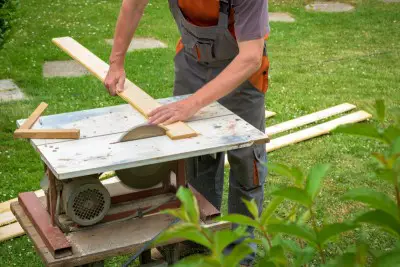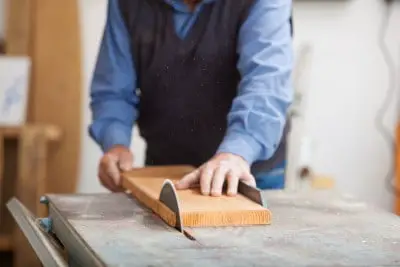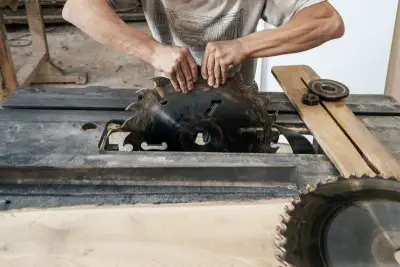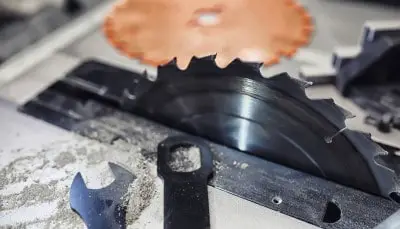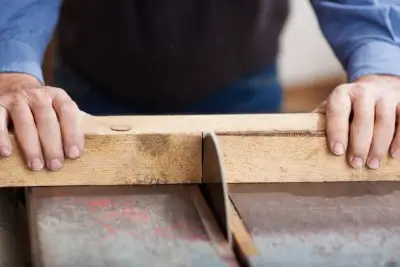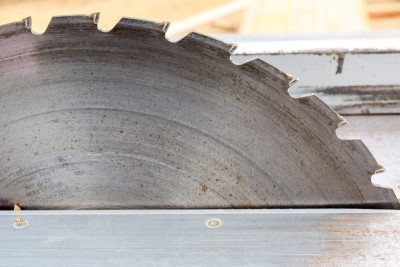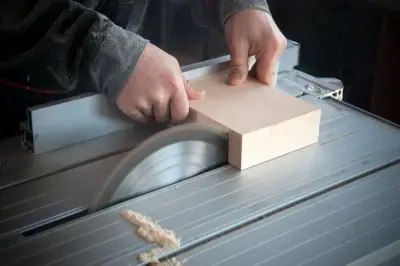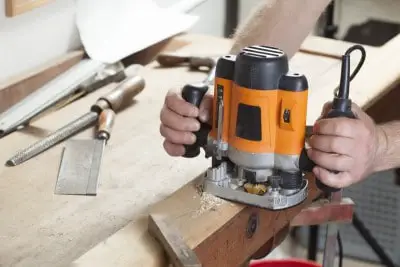Table saws are fantastic tools for woodworking and general home construction. Much more effective than any handheld or manual saw, these machines can cut any type of wood with serious precision and ease.
Typically, table saws are used for their power – but, it defeats the purpose when the saw appears to not cut the same way it used to. If this is happening to you, it might be time to replace your table saw’s blade.
The life span of a table saw blade depends entirely on the quality of the tool, how often it’s used, the type of wood material it’s used on, and many other factors. That said, an average table saw blade will last about 2-4 years until it needs to be replaced.
Sometimes, you don’t even have to replace your table saws blade… a simple cleaning and sharpening will do.
In this article, I will go over the types of table saw inserts and blade, how to know when it’s time to sharpen or replace your blade (and how do to so), and the necessary safety precautions you should exercise before using this tool.
But first, let’s take a look at the different types of inserts which are one of the most crucial elements of a table saw, second only to the actual blade.
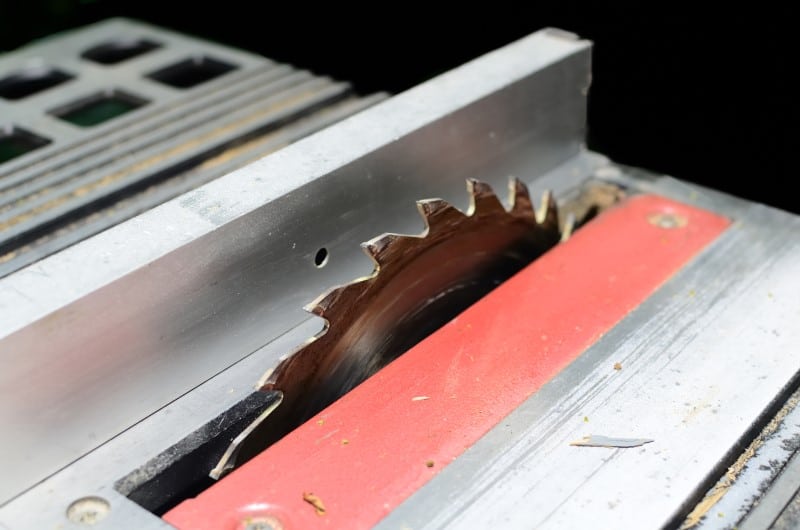
Types of Table Saw Inserts
Inserts are the part of a table saw that protects most of the saw from debris, such as sawdust.
The three types of table saw inserts are:
Standard
As the name suggests, these are the ‘regular’ table saw inserts. If you buy your table saw from a hardware store in a complete package, this is usually the insert you will get.
Zero Clearance
This table saw insert is used for ripping cuts, which means cutting wood in a way that is parallel to the grain.
The Zero Clearance Insert is also intended for cross-cuts, which means cutting in a perpindicluar direction to the grain.
Wide Gap
The wide gap table saw inserts are for dado and trenching cuts.
Dado cuts are when a piece of wood is cut so that another piece of wood fits into it. Trenching cuts are when you cut a square piece into wood so that another piece of wood can fit into it, thus ‘interlocking’ them.
Let’s take a look at the different types of table saw blades.
Types of Table Saw Blades
There are three main types of table saw blades – certain blades are designed for specific purposes.
Standard
The standard table saw blade is what you have unless you bought your blade seperate from your saw. This is usually all you need, unless you are cutting atypically.
Wobble
This is simply a blade that is slanted, in order to match the slant of the table you are cutting with; in that case, it helps with precision.
Dado
The dado blade is needed for trench cuts – you must use a wide gap insert when using this blade, or vice versa.
How Do You Know When Your Table Saw Should Be Replaced?
The answer to this question is almost entirely up to you, or whomever is using the table saw.
If you notice that your saw is not cutting as easily or with as much precision as it did when you first purchased the power tool, it is probably time for a new blade. Alternatively, you can (carefully) touch the blade to feel whether it is more dull than needed; obviously, make sure the table saw is off and unplugged to prevent injuries.
Oftentimes, you may only notice your table saw’s blade is dull when you attempt to cut a difficult piece of wood. In this case, you might need a replacement or an upgrade.
If you are comfortable with blades and have the right resources, you can also sharpen the blade of your table saw yourself.
How To Sharpen A Table Saw Blade
Throughout the entire process of sharpening your table saw’s blade, please make sure to exercise extreme caution. We often underestimate how much damage these blades can do to us, even when turned off; it is easy to get carried away and become sloppy, so pay extra mind to your safety.
To sharpen a table saw blade, you will need the following safety tools:
- protective gloves
- safety glasses
- earplugs (or other ear protection)
- respirator (if you feel comfortable, you can also use a regular face mask)
In addition to the safety wear, you will also need to get your hands on a diamond saw blade. These go for around $30-60 USD, and you can find them at your local hardware store. This is what will actually do the sharpening.
If you have these tools, you can start by switching off and unplugging the table saw. Then, you can go about removing the blade from the saw – most saws will have a blade release switch. Otherwise, you may need to loosen it with a wrench.
Once the blade is removed, replace it with the diamond blade.
Then, simply turn the saw on – by bringing the table saw blade close to the diamond blade, it will sharpen all by itself. You will need to do this for every single ‘tooth’ of the blade.
Once that is done, your table saw blade should be (almost) good as new.
Table Saw Safety Precautions
Using a table saw is similar in danger to most other power tools, although it is particularly risky due to its sharp blade. The speed at which this tool works makes it a real hazard if you are not taking the proper safety precautions… this is especially true if your blade is new or recently sharpened.
Before you use your table saw, please remember to practice the following:
- if you are under the age of 18, find an adult to supervise you.
- if you are unfamiliar with power tools or electric saws, find someone who knows what they are doing to help you.
- do not wear any form of rings or jewelry on your hands, as they could impact your ability to safely use the tool (such as getting your fingers caught in the wrong place).
- always use the blade guard (if you buy your table saw new, it will likely come with a guard).
- wear earplugs or some form of ear protection (similar to other power tools, an electric table saw can be very loud which means it can damage your ears).
- don’t stand it the way of the ‘line of cutting’ (stand to the side of the cutting direction – make sure anyone in close proximity of the job does so as well).
- wear some form of protective eye gear at all times (even if it’s sunglasses, assuming you can see what you’re doing).
- refrain from wearing any type of gloves while using an electric table saw (that includes work gloves – they can get caught in the machine).
- always use a guide, which is a small fence typically located on the front of the table that helps you ‘stay on track’ during cutting (otherwise, you risk injury to your fingers or other body parts).
- use the push stick at all times, which is a simple wooden tool that helps you control the piece of wood you are cutting without putting you in harm’s way of the saw (this will also save you from flying pieces of wood or material, which can be damaging to you or your surroundings).
- and, under any and all circumstances, never reach over the saw while in use; this includes reaching over to hold down the wood you are cutting.
Practicing these measures will ensure you can go about using your table saw safely and without a problem.
Read more:

